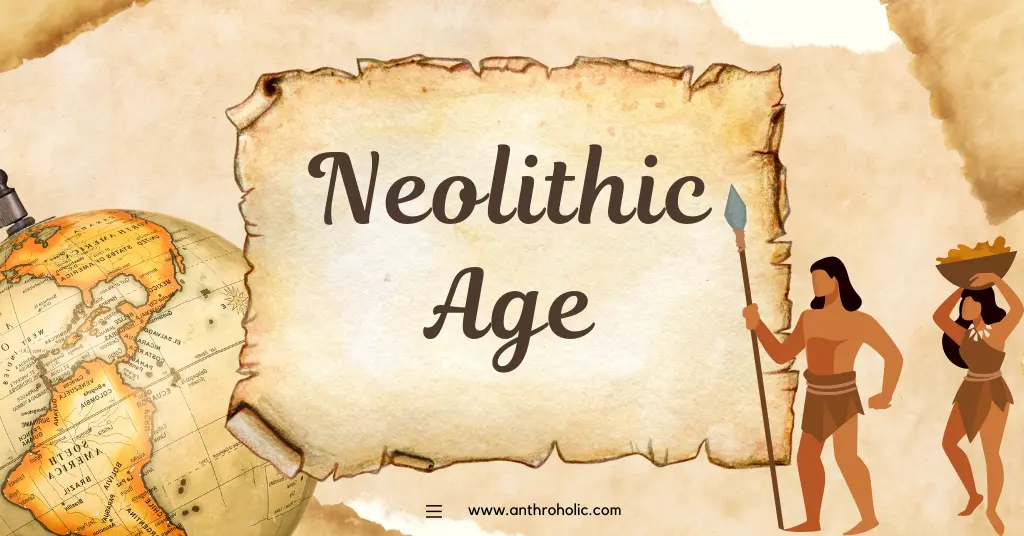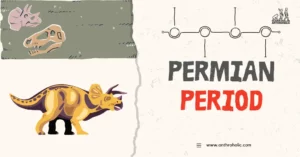AI Answer Evaluation Platform Live Now. Try Free Answer Evaluation Now
Neolithic Age
The Neolithic Age, also known as the New Stone Age, marked a significant era in human history. It spanned approximately from 10,000 BCE to 3,000 BCE, varying geographically. This epoch witnessed the transition from a nomadic lifestyle to settled farming communities, creating an incredible leap in societal and technological advancement.

Evolution of Lifestyle
The advent of the Neolithic Age brought about substantial changes in human lifestyle, primarily in these domains:
- Food Production: Humans transitioned from a lifestyle of hunting and gathering to a more settled form of subsistence through farming and domestication of animals. This change revolutionized the way humans interacted with their environment and each other.
- Settlements: With the rise in agriculture, humans started establishing permanent dwellings, gradually evolving into villages and towns.
- Craftsmanship: New tools were developed for agricultural practices and everyday living. The use of polished stone tools became widespread, which is why this era is also known as the New Stone Age.
- Social Structure: Society became more complex with the rise of stored surplus, leading to social stratification and the development of different social roles.
| Paleolithic Era | Neolithic Era | |
|---|---|---|
| Lifestyle | Nomadic | Settled |
| Food | Hunting and Gathering | Farming and Animal rearing |
| Tools | Rough Stone Tools | Polished Stone Tools |
| Social | Egalitarian | Stratified |
Noteworthy Innovations
The Neolithic Age was characterized by significant innovations:
- Pottery: The invention of pottery provided storage solutions for the surplus of food produced.
- Textiles and Clothing: The domestication of sheep provided wool, leading to the production of textiles and improved clothing.
- Architectural advancements: Housing structures became complex with the construction of granaries, multi-roomed houses, and even communal buildings.
- Trade: Surplus resources led to the beginnings of trade with neighboring communities, fostering relationships and cultural exchange.
The Significance of the Neolithic Revolution
Often referred to as the Neolithic Revolution, this period of change significantly altered human societies. The shift from hunting-gathering to agricultural communities enabled population growth and the development of social hierarchies. The surplus of resources led to the rise of trade and the diversification of labor, paving the way for modern societies.
The Downside of Progress
Despite its many advancements, the Neolithic Age was not without its drawbacks. An increased population density and reliance on a smaller variety of food sources could lead to overcrowding, famine, and disease. The development of social hierarchies and property rights also gave rise to social conflicts.
Key Locations and Artifacts of the Neolithic Age
Important Archaeological Sites
The Neolithic Age left us a rich archaeological record that provides a glimpse into the life of the first farming communities. Here are some key Neolithic sites:
- Çatalhöyük, Turkey: This site is home to one of the world’s earliest known towns, dating back to around 7,500 BCE. The densely packed houses reveal sophisticated domestic architecture and vibrant murals that depict the community’s spiritual beliefs.
- Jericho, West Bank: Considered one of the oldest continuously inhabited cities in the world, its earliest settlements date back to 9,000 BCE. Jericho’s stone tower and walls represent an early example of defensive architecture.
- Stonehenge, England: Built in several stages, the iconic stone monument dates back to around 3,000 BCE. This site demonstrates the capabilities of Neolithic engineering and astronomy.
- Skara Brae, Scotland: This well-preserved Stone Age village, inhabited from roughly 3,180 BCE to 2,500 BCE, provides insights into the domestic life of the era, with houses furnished with stone-built furniture.
| Archaeological Site | Location | Key Features |
|---|---|---|
| Çatalhöyük | Turkey | Houses, Murals |
| Jericho | West Bank | Stone Tower, Walls |
| Stonehenge | England | Stone Monuments |
| Skara Brae | Scotland | Stone-Built Houses |
Significant Neolithic Artifacts
Artifacts recovered from Neolithic sites provide valuable insights into the lifestyle, culture, and beliefs of the people from this era. A few notable artifacts include:
- Polished stone tools: These served a variety of purposes, including farming, construction, and defense.
- Clay figurines and pottery: These artifacts, often decorative, also had practical uses such as food storage and cooking.
- Beads and jewelry: Made from shells, bones, and stones, these artifacts indicate the existence of personal adornment and status symbols.
Conclusion
The Neolithic Age marked a turning point in human history. The transition from a nomadic lifestyle to established settlements resulted in profound societal and cultural changes, many of which have significantly influenced the course of human civilization. Despite the challenges that arose during this period, the advances made during the Neolithic Age shaped the foundation for all modern societies.
References
- Childe, V.G. (1936). “Man Makes Himself”. London: Watts.
- Bellwood, P. (2004). “First Farmers: The Origins of Agricultural Societies”. Blackwell Publishers.
- Diamond, J. (1997). “Guns, Germs, and Steel”. W.W. Norton & Company.
- Renfrew, C., & Bahn, P. (2008). “Archaeology: Theories, Methods, and Practice”. Thames & Hudson. https://archive.org/details/ArchaeologyTheoriesMethodsAndPracticeTheoriesMethodsAndPractice
- Mellaart, J. (1967). “Çatal Hüyük: A Neolithic Town in Anatolia”. McGraw-Hill.
- Kenyon, K.M. (1957). “Digging Up Jericho”. Ernest Benn.
- Parker Pearson, M. (2012). “Stonehenge: Exploring the Greatest Stone Age Mystery”. Simon & Schuster UK.
- Childe, V.G. (1931). “Skara Brae”. Kegan Paul.




